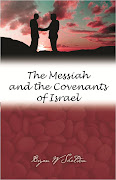John the Baptist and the Sanhedrists
About
the time Jesus was in Capernaum the Baptist was visited by a delegation from
the Sanhedrin to check whether he was the long-awaited Messiah. Indications
were that all Israel was in expectancy that their Deliverer would soon be with
them because of the prophecy of Daniel 9, i.e. that 483 years after the issuing
of the edict to rebuild Jerusalem, Messiah the Prince would come. The
population of Jerusalem had increased year on year in expectation of the
unveiling of the ‘Coming One’. To many John seemed a likely candidate (Luke
3:15). But John rejected the possibility saying: “I am ‘The voice of one
crying in the wilderness: “Make straight the way of the LORD,” as the prophet
Isaiah said.””
(John 1:23; cf. Isa.40:3).
The
visit of the delegation from Jerusalem was part of the process laid down for
the examining of Messianic credentials of any Messianic claimant. It would soon
be repeated with the Lord Jesus. But when John declared that he was not the
One, the process was soon aborted.
However, John did indicate that the Messiah
was close at hand and was as elevated above him as a king is elevated above a
beggar. John (whom Jesus said was the greatest prophet born of woman)
(Matt.11:11; Luke 7:28) asserted that he was not worthy even to carry Messiah’s
sandals (Matt.3:11).
Jesus heals a leper
Luke, in his biography, soon comes to a very
important healing. It was a severe case of leprosy. “Behold, a man who was full
of leprosy saw Jesus; and he fell on his face and implored Him, saying,
Lord, if You are willing, You can make me clean. Then He (Jesus) put out His hand
and touched him, saying, I am willing; be cleansed. Immediately the leprosy
left him.” It is significant that this first recorded case of leprosy that
was treated by the Messiah was a person “full of leprosy”. The
disease had such a hold that it had almost extinguished life. It had run its
course and had the decaying man firmly in its grip. Since leprosy is called the
‘living death’ and is, according to the Mishnah, a “father of uncleanness”, and
is listed next to “corpse uncleanness”, how remarkable is the action of the
Messiah, “He put out His hand and touched him”. The creeping
death fled before the Lord of life. The touch of “the resurrection and the
life” regenerated the dying body of the diseased man. Jesus instructed the
leper to report to the priest, and offer those sacrifices that were required by
the law.
The
ministry to lepers does not have as much prominence in the gospels as the
ministry of exorcisms. Nevertheless, there are those touches to show that it
was an integral part of the overall mission of the Messiah. When John sent to
Jesus for confirmation of His Messiahship, the Messiah offered His miraculous
ministry as proof. Included in the catalogue of attesting signs was the
ministry to lepers. “Jesus answered and said to them, Go and tell John the
things you have seen, the lepers are cleansed and the deaf hear; the dead
are raised up and the poor have the gospel preached to them” (Matt.11:4,5). Observe that
Jesus used the word ‘cleansed’ not healed. Like the casting out of demons,
Jesus also delegated this ministry to the apostles, to offer further proof to
the nation that He was truly Israel’s Messiah.
The case of the leper was dire. The isolation
imposed on him not only took him out of any social contact with others, but
also removed him from any support the Temple and its sacrifices might give.
Rabbinism confessed itself powerless in the presence of this living death. So
this first healing of a leper was bound to cause some excitement and the news
of the miracle spread very quickly.
The healing of leprosy was a de-facto
Messianic claim and Jesus, wishing to bring His claim to the attention of the
Sanhedrin could have done nothing more to arouse their interest that sending
the healed man to the priests in Jerusalem to follow the prescribed procedure.
In the administration of the law of the
leper, the priest would require answers to three questions.
(1) Had he really been a leper? The priest
would need either a testimony, or a priestly record, or better still, both.
(2) Is he now clean? The priests would
examine him over a period of seven days to confirm that there was no trace of
the disease.
(3) What was the agency of his cleansing? Was
it the result of an intervention by someone?
The leper of Luke 5 would have the following
answers. To the first question – Yes, he had been a leper, indeed a very severe
case, as many would testify. As to the second question, after the seven-day
period of examination the priest would confirm his healing. Third and last, the
leper would confirm that the Messianic claimant, Jesus of Nazareth did it!
Next Time : Investigating a Messianic Claim




